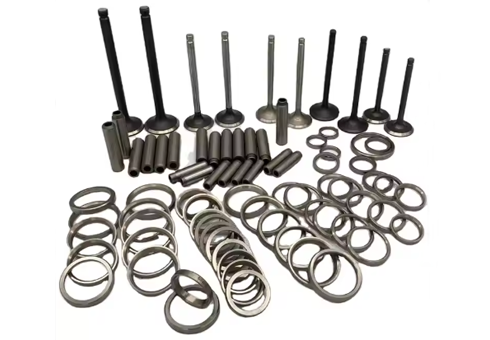Vehicles operate thanks to the internal combustion engine (ICE), which relies on a combination of processes. The ignition and combustion of fuel within the engine result in the generation of energy. This energy is then partially converted into mechanical torque and heat, propelling the car forward. For this to happen efficiently, the engine comprises a range of crucial components, all of which work in harmony to make the vehicle function. Understanding these essential car engine parts is important for anyone seeking to comprehend how a vehicle operates and why regular maintenance is needed for optimal performance.

The engine block serves as the structural foundation of the engine. Often made of cast iron or aluminum, it houses the essential components that drive the car, such as the pistons, crankshaft, and connecting rods. The engine block is divided into three primary sections: the cylinder head, the block, and the crankcase. The most critical function of the engine block is to house the cylinders, the metal tubes where the combustion process takes place. Depending on the type of engine, there can be anywhere from four to sixteen cylinders, and their diameter directly impacts the engine’s displacement and power output.
Within each cylinder, the fuel and air mixture is ignited, causing a controlled explosion that drives the pistons up and down. The engine block also contains passages for coolant and oil, which are vital for keeping the engine at a safe operating temperature and properly lubricated to prevent wear and tear.
The pistons play a vital role in converting the energy generated by combustion into motion. They are positioned inside the cylinders and move up and down in response to the expanding gases created during the combustion process. This reciprocating motion is transferred to the crankshaft via connecting rods. The crankshaft, located in the lower section of the engine block, then converts this linear motion of the pistons into rotational motion. The spinning crankshaft drives the vehicle's wheels, propelling the car forward.
The crankshaft is an intricate part of the engine, finely machined to ensure precision and balance. To function properly, it must be well balanced, as any irregularities can lead to excessive vibration and potential engine failure. The crankshaft has holes and cutouts to reduce its weight and maintain balance while rotating at high speeds.
The camshaft is another crucial component of the engine, responsible for controlling the timing of the opening and closing of the engine’s intake and exhaust valves. It does this by pressing on the valve stems, ensuring that the valves open at the correct moment during the combustion cycle. The camshaft is linked to the crankshaft through a timing belt or chain, and its rotation synchronizes with the engine’s cycles, allowing for efficient combustion. Without the camshaft, the engine would be unable to function, as the proper flow of air and fuel into the engine, as well as the expulsion of exhaust gases, would not be regulated.
Additionally, the camshaft absorbs the rotary motion from the crankshaft and transfers it into a back-and-forth (linear) motion, crucial for managing the valves' operation. Depending on the engine design, the camshaft may have multiple lobes, each of which controls different valves.
All of the components in a car engine are subject to intense heat as they work together to power the vehicle. Engine combustion, combined with the movement of mechanical parts, creates a great deal of heat. If the engine's temperature is not managed properly, it can overheat and cause serious damage. That’s where the cooling system comes in.
The heart of this system is the water pump, which circulates coolant (a mixture of water and antifreeze) through the engine. The coolant absorbs heat from the engine and carries it away to the radiator, where it is cooled by air. Without an efficient cooling system, an engine can quickly overheat, leading to serious damage such as warped components, engine seizure, or even total engine failure. The water pump ensures that the engine remains within a safe operating temperature, even under heavy load or prolonged use.
While the main car engine parts like the engine block, pistons, crankshaft, camshaft, and cooling system are critical for the proper functioning of the engine, regular maintenance is key to ensuring longevity and efficiency. Over time, components wear down or may experience buildup of dirt, oil, or carbon deposits. Regular oil changes, cooling system checks, and attention to the engine’s timing and valve mechanics help avoid costly repairs. Failing to maintain these parts can lead to engine overheating, poor performance, or even catastrophic failure.
By understanding the essential car engine parts and their roles, vehicle owners can take better care of their engines, ensuring smooth performance and avoiding major repair issues down the line.